-

Oct
10
Interpretive Summary: New findings on the genetic basis of feathered legs in chickens: association of CUBN gene mutations with feathered-leg phenotype

Birds display remarkable diversity in the distribution and morphology of scales and feathers on their legs. However, the genetic and developmental mechanisms controlling this diversity are complex and remain largely unknown. Feathered legs are a phenotypic trait of domestic chickens, which have undergone intense selection.
Read more
-

Oct
10
Interpretive Summary: Chicken meal is not an appropriate reference protein for estimating protein quality of ingredients used in extruded diets intended for dogs

Metabolic availability (MA) of an amino acid (AA) is the portion of a dietary AA that is both digestible and available for protein synthesis. Peas are a commonly used protein source in grain-free dog foods, often included in large proportions. Methionine (Met) is an essential AA and the first limiting AA in peas so knowing the MA of Met in peas can ensure sufficient bioavailable Met is provided in these diets.
Read more
-

Oct
10
Interpretive Summary: Technical note: assessing GPS sensor accuracy using real-time kinematic device for livestock tracking
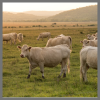
GPS sensors play a pivotal role in modern livestock tracking, enabling producers and researchers to monitor grazing livestock, understand their behavior, and assess health indicators. Despite their widespread use, effectively interpreting the gathered data poses challenges due to positioning inaccuracies.
Read more
-

Oct
10
Interpretive Summary: Effect of supplementing algae to breeding and early gestation first calf heifers on growth and reproduction
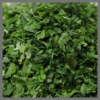
Docosahexaenoic acid (DHA, 22:6n-3) and eicosapentaenoic acid (EPA, 20:5n-3) are long-chain omega-3 poly-unsaturated fatty acids (PUFA) that have important biological effects on reproduction through their involvement in hormone and series 3 prostaglandin synthesis. Ruminant tissues are naturally almost devoid of omega-3 long-chain PUFA, specifically EPA and DHA.
Read more
-

Oct
03
Interpretive Summary: Effects of a Bacillus-based direct-fed microbial on performance, blood parameters, fecal characteristics, rumen morphometrics, and intestinal gene expression in finishing beef bulls
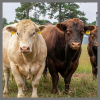
One of the main alternatives of additives to modulate the microbial population in the gastrointestinal tract (GIT), especially in the intestine, is the use of direct-fed microbials (DFM). This class of additives comprises all the feed products that contain a live or naturally occurring source of microorganism.
Read more
-

Oct
03
Interpretive Summary: Selenium suppressed the LPS-induced oxidative stress of bovine endometrial stromal cells through Nrf2 pathway with high cortisol background
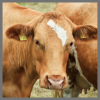
The postpartum uterine infections seriously threaten the productive and reproductive performance of dairy cows. The elevated cortisol level after delivery can worsen infections. Selenium (Se) enhances disease resistance of dairy cows.
Read more
-

Oct
03
Interpretive Summary: Size matters: lower body weight pigs have a different response to immune challenge and amino acids supplementation above the estimated requirement compared to heavy pigs
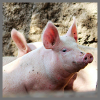
An immune challenge impacts pig welfare and may decrease growth and protein deposition. These may happen due to the different nutrient requirements of immune-challenged pigs compared to non-challenged. Dietary supplementation of tryptophan, threonine, and methionine has been proven to be a strategy to mitigate performance losses by supporting immune system functioning, maintaining gut barrier integrity, and reducing oxidative status.
Read more
-

Oct
03
Interpretive Summary: Effects of late gestational nutrient restriction on uterine artery blood flow, placental size, and cotyledonary mRNA expression in primiparous beef females
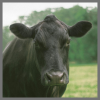
Nutrient requirements increase substantially during late gestation in the beef female to support fetal, uteroplacental, and mammary growth, and in the still-growing heifer, nutrients are also needed for maternal tissue growth. During pregnancy, the placenta serves as the interface for the metabolism and transport of nutrients, gases, and wastes between maternal and fetal circulations.
Read more
-

Oct
03
Interpretive Summary: Sward type alters enteric methane emissions, nitrogen output and the relative abundance of the rumen microbial ecosystem in sheep
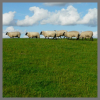
Mitigating greenhouse gas emissions from ruminants fed forage diets will reduce the carbon footprint of livestock production and the agricultural sector globally, thereby improving the overall environmental sustainability of ruminant production. In the current study, sheep housed in metabolism crates were offered 5 differing zero-grazed sward types.
Read more
-

Sep
26
Washington Roundup - September 2024
.png?sfvrsn=c1d454d1_1)
With the fiscal year coming to an end on September 30th, Congress has limited time to pass stopgap legislation to avert a government shutdown. While there is broad recognition that a continuing resolution is needed, there are differing approaches being considered.
Read more
-

Sep
26
Interpretive Summary: Initial timing of alfalfa hay supplementation manipulates blood parameters, rumen gene expression, and epithelial microbiota in pre-weaning lambs
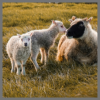
Recent studies have shown that in pre-weaning ruminants, the addition of alfalfa hay is beneficial for growth and rumen development. However, the effect of alfalfa supplementation timing on the growth of pre-weaning lambs remains still unclear.
Read more
-

Sep
26
Interpretive Summary: Comparison of the effects of alfalfa meal and sorghum distillery residue supplementation on the methane emissions in black-feathered Taiwan native chicken

In this study, researchers focused on addressing the crucial issue of global warming by tackling methane (CH4) emissions from chickens, an important source of greenhouse gases. We investigated the impact of adding alfalfa meal and sorghum distillery residues (SDRs) to the diets of Taiwan’s native black-feathered chickens.
Read more
-

Sep
26
Interpretive Summary: Behavioral activity patterns but not hair cortisol concentrations explain steers’ transition-related stress in the first 6 wk in the feedlot
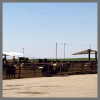
Preconditioning constitutes management practices that help reduce steers’ transition-related stress from a ranch to a feedlot. Auction-derived (AD) steers, generally exposed to various stressors over a short period, are often commingled with preconditioned (PC) steers in feedlots for homogeneity.
Read more
-

Sep
19
Interpretive Summary: Duckweed protein as an alternative plant-based protein source for dog and cat dry diets

Duckweed, an aquatic plant rich in protein, holds promise as a sustainable plant-based protein for companion animals. However, the potential of duckweed protein in dog and cat diets has been relatively unexplored. In our study, we assessed the viability of incorporating duckweed protein into dog and cat diets by examining nutrient digestibility, stool consistency, and diet palatability.
Read more
-

Sep
19
Interpretive Summary: Effects of betaine supplementation on dry matter intake, milk characteristics, plasma non-esterified fatty acids, and β-hydroxybutyric acid in dairy cattle: a meta-analysis
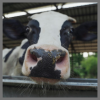
The aim of this meta-analysis was to examine the effects of dietary betaine supplementation on dairy cows’ dry matter intake, milk production, milk composition, non-esterified fatty acids, and β-hydroxybutyric acid. The results indicated that the supplementation of betaine increased dry matter intake, energy-corrected milk, milk fat yield, milk protein yield, and lactose yield.
Read more
-

Sep
19
Interpretive Summary: Sustainable aquaculture practices in South Asia: a comparative analysis of feed formulation and utilization
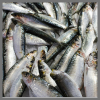
The fisheries and aquaculture sectors are vital in ensuring global food and nutritional security. As per FAO (2022), the global production of aquatic animals was a staggering 178 million tonnes in 2020, with aquaculture contributing a significant 87.5 million tonnes. This means that almost half of the global aquaculture animal production, at 49%, is due to the aquaculture sector.
Read more
-

Sep
19
Interpretive Summary: Glycine nutrition and biochemistry from an aquaculture perspective
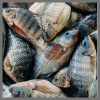
Aquaculture represents the fastest-growing farmed food sector globally, surpassing total capture fisheries at approximately 90 million tons for human consumption (FAO, 2022). However, due to the rapid increase of farmed fish production to meet the protein demands of an increasing world population, marine feedstuffs are now considered finite resources and are transitioning to strategic ingredients in the diets of most carnivorous fish, and are largely omitted in the diets of omnivorous species such as Nile tilapia and channel catfish except in early life stages.
Read more
-

Sep
19
Interpretive Summary: Transforming aquaculture with insect-based feed: restraining factors
a666eb5b-beae-46cd-922e-dfd1f6209242.png?sfvrsn=43c254d1_1)
The first explorations into utilizing insects as a food source due to the foresight of impending food demand occurred in the 1930s, the period between the world wars (Bodenheimer, 1951). By the 1980s, more structured research underscored the tangible advantages of incorporating insect larvae into animal and aquaculture feeds (Newton et al., 1977; Bondari and Sheppard, 1981, 1987).
Read more
-

Sep
19
Interpretive Summary: Testing the waters: the state of U.S. shellfish permitting regulations
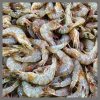
Aquaculture produces roughly half of the seafood consumed worldwide, yet in the United States, the industry remains strikingly limited relative to its potential capacity (Lester et al., 2021). At present, U.S. marine aquaculture (mariculture) consists mostly of small-scale shellfish farming within state waters, with some states boasting well-established shellfish industries and others having entered the industry in earnest only in the last decade.
Read more
-

Sep
18
The Giving Herd - ASAS Foundation Newsletter - September 2024
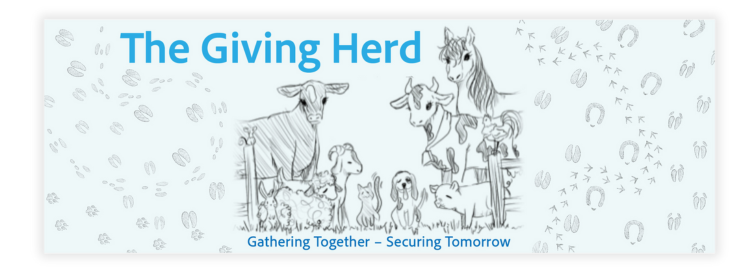
The September Edition of The Giving Herd, an ASAS Foundation Newsletter.
Read more
 OctInterpretive Summary: New findings on the genetic basis of feathered legs in chickens: association of CUBN gene mutations with feathered-leg phenotype
OctInterpretive Summary: New findings on the genetic basis of feathered legs in chickens: association of CUBN gene mutations with feathered-leg phenotype Birds display remarkable diversity in the distribution and morphology of scales and feathers on their legs. However, the genetic and developmental mechanisms controlling this diversity are complex and remain largely unknown. Feathered legs are a phenotypic trait of domestic chickens, which have undergone intense selection.
Birds display remarkable diversity in the distribution and morphology of scales and feathers on their legs. However, the genetic and developmental mechanisms controlling this diversity are complex and remain largely unknown. Feathered legs are a phenotypic trait of domestic chickens, which have undergone intense selection. OctInterpretive Summary: Chicken meal is not an appropriate reference protein for estimating protein quality of ingredients used in extruded diets intended for dogs
OctInterpretive Summary: Chicken meal is not an appropriate reference protein for estimating protein quality of ingredients used in extruded diets intended for dogs Metabolic availability (MA) of an amino acid (AA) is the portion of a dietary AA that is both digestible and available for protein synthesis. Peas are a commonly used protein source in grain-free dog foods, often included in large proportions. Methionine (Met) is an essential AA and the first limiting AA in peas so knowing the MA of Met in peas can ensure sufficient bioavailable Met is provided in these diets.
Metabolic availability (MA) of an amino acid (AA) is the portion of a dietary AA that is both digestible and available for protein synthesis. Peas are a commonly used protein source in grain-free dog foods, often included in large proportions. Methionine (Met) is an essential AA and the first limiting AA in peas so knowing the MA of Met in peas can ensure sufficient bioavailable Met is provided in these diets. OctInterpretive Summary: Technical note: assessing GPS sensor accuracy using real-time kinematic device for livestock tracking
OctInterpretive Summary: Technical note: assessing GPS sensor accuracy using real-time kinematic device for livestock tracking GPS sensors play a pivotal role in modern livestock tracking, enabling producers and researchers to monitor grazing livestock, understand their behavior, and assess health indicators. Despite their widespread use, effectively interpreting the gathered data poses challenges due to positioning inaccuracies.
GPS sensors play a pivotal role in modern livestock tracking, enabling producers and researchers to monitor grazing livestock, understand their behavior, and assess health indicators. Despite their widespread use, effectively interpreting the gathered data poses challenges due to positioning inaccuracies. OctInterpretive Summary: Effect of supplementing algae to breeding and early gestation first calf heifers on growth and reproduction
OctInterpretive Summary: Effect of supplementing algae to breeding and early gestation first calf heifers on growth and reproduction Docosahexaenoic acid (DHA, 22:6n-3) and eicosapentaenoic acid (EPA, 20:5n-3) are long-chain omega-3 poly-unsaturated fatty acids (PUFA) that have important biological effects on reproduction through their involvement in hormone and series 3 prostaglandin synthesis. Ruminant tissues are naturally almost devoid of omega-3 long-chain PUFA, specifically EPA and DHA.
Docosahexaenoic acid (DHA, 22:6n-3) and eicosapentaenoic acid (EPA, 20:5n-3) are long-chain omega-3 poly-unsaturated fatty acids (PUFA) that have important biological effects on reproduction through their involvement in hormone and series 3 prostaglandin synthesis. Ruminant tissues are naturally almost devoid of omega-3 long-chain PUFA, specifically EPA and DHA. OctInterpretive Summary: Effects of a Bacillus-based direct-fed microbial on performance, blood parameters, fecal characteristics, rumen morphometrics, and intestinal gene expression in finishing beef bulls
OctInterpretive Summary: Effects of a Bacillus-based direct-fed microbial on performance, blood parameters, fecal characteristics, rumen morphometrics, and intestinal gene expression in finishing beef bulls One of the main alternatives of additives to modulate the microbial population in the gastrointestinal tract (GIT), especially in the intestine, is the use of direct-fed microbials (DFM). This class of additives comprises all the feed products that contain a live or naturally occurring source of microorganism.
One of the main alternatives of additives to modulate the microbial population in the gastrointestinal tract (GIT), especially in the intestine, is the use of direct-fed microbials (DFM). This class of additives comprises all the feed products that contain a live or naturally occurring source of microorganism. OctInterpretive Summary: Selenium suppressed the LPS-induced oxidative stress of bovine endometrial stromal cells through Nrf2 pathway with high cortisol background
OctInterpretive Summary: Selenium suppressed the LPS-induced oxidative stress of bovine endometrial stromal cells through Nrf2 pathway with high cortisol background The postpartum uterine infections seriously threaten the productive and reproductive performance of dairy cows. The elevated cortisol level after delivery can worsen infections. Selenium (Se) enhances disease resistance of dairy cows.
The postpartum uterine infections seriously threaten the productive and reproductive performance of dairy cows. The elevated cortisol level after delivery can worsen infections. Selenium (Se) enhances disease resistance of dairy cows. OctInterpretive Summary: Size matters: lower body weight pigs have a different response to immune challenge and amino acids supplementation above the estimated requirement compared to heavy pigs
OctInterpretive Summary: Size matters: lower body weight pigs have a different response to immune challenge and amino acids supplementation above the estimated requirement compared to heavy pigs An immune challenge impacts pig welfare and may decrease growth and protein deposition. These may happen due to the different nutrient requirements of immune-challenged pigs compared to non-challenged. Dietary supplementation of tryptophan, threonine, and methionine has been proven to be a strategy to mitigate performance losses by supporting immune system functioning, maintaining gut barrier integrity, and reducing oxidative status.
An immune challenge impacts pig welfare and may decrease growth and protein deposition. These may happen due to the different nutrient requirements of immune-challenged pigs compared to non-challenged. Dietary supplementation of tryptophan, threonine, and methionine has been proven to be a strategy to mitigate performance losses by supporting immune system functioning, maintaining gut barrier integrity, and reducing oxidative status. OctInterpretive Summary: Effects of late gestational nutrient restriction on uterine artery blood flow, placental size, and cotyledonary mRNA expression in primiparous beef females
OctInterpretive Summary: Effects of late gestational nutrient restriction on uterine artery blood flow, placental size, and cotyledonary mRNA expression in primiparous beef females Nutrient requirements increase substantially during late gestation in the beef female to support fetal, uteroplacental, and mammary growth, and in the still-growing heifer, nutrients are also needed for maternal tissue growth. During pregnancy, the placenta serves as the interface for the metabolism and transport of nutrients, gases, and wastes between maternal and fetal circulations.
Nutrient requirements increase substantially during late gestation in the beef female to support fetal, uteroplacental, and mammary growth, and in the still-growing heifer, nutrients are also needed for maternal tissue growth. During pregnancy, the placenta serves as the interface for the metabolism and transport of nutrients, gases, and wastes between maternal and fetal circulations. OctInterpretive Summary: Sward type alters enteric methane emissions, nitrogen output and the relative abundance of the rumen microbial ecosystem in sheep
OctInterpretive Summary: Sward type alters enteric methane emissions, nitrogen output and the relative abundance of the rumen microbial ecosystem in sheep Mitigating greenhouse gas emissions from ruminants fed forage diets will reduce the carbon footprint of livestock production and the agricultural sector globally, thereby improving the overall environmental sustainability of ruminant production. In the current study, sheep housed in metabolism crates were offered 5 differing zero-grazed sward types.
Mitigating greenhouse gas emissions from ruminants fed forage diets will reduce the carbon footprint of livestock production and the agricultural sector globally, thereby improving the overall environmental sustainability of ruminant production. In the current study, sheep housed in metabolism crates were offered 5 differing zero-grazed sward types. SepWashington Roundup - September 2024
SepWashington Roundup - September 2024.png?sfvrsn=c1d454d1_1) With the fiscal year coming to an end on September 30th, Congress has limited time to pass stopgap legislation to avert a government shutdown. While there is broad recognition that a continuing resolution is needed, there are differing approaches being considered.
With the fiscal year coming to an end on September 30th, Congress has limited time to pass stopgap legislation to avert a government shutdown. While there is broad recognition that a continuing resolution is needed, there are differing approaches being considered. SepInterpretive Summary: Initial timing of alfalfa hay supplementation manipulates blood parameters, rumen gene expression, and epithelial microbiota in pre-weaning lambs
SepInterpretive Summary: Initial timing of alfalfa hay supplementation manipulates blood parameters, rumen gene expression, and epithelial microbiota in pre-weaning lambs Recent studies have shown that in pre-weaning ruminants, the addition of alfalfa hay is beneficial for growth and rumen development. However, the effect of alfalfa supplementation timing on the growth of pre-weaning lambs remains still unclear.
Recent studies have shown that in pre-weaning ruminants, the addition of alfalfa hay is beneficial for growth and rumen development. However, the effect of alfalfa supplementation timing on the growth of pre-weaning lambs remains still unclear. SepInterpretive Summary: Comparison of the effects of alfalfa meal and sorghum distillery residue supplementation on the methane emissions in black-feathered Taiwan native chicken
SepInterpretive Summary: Comparison of the effects of alfalfa meal and sorghum distillery residue supplementation on the methane emissions in black-feathered Taiwan native chicken In this study, researchers focused on addressing the crucial issue of global warming by tackling methane (CH4) emissions from chickens, an important source of greenhouse gases. We investigated the impact of adding alfalfa meal and sorghum distillery residues (SDRs) to the diets of Taiwan’s native black-feathered chickens.
In this study, researchers focused on addressing the crucial issue of global warming by tackling methane (CH4) emissions from chickens, an important source of greenhouse gases. We investigated the impact of adding alfalfa meal and sorghum distillery residues (SDRs) to the diets of Taiwan’s native black-feathered chickens. SepInterpretive Summary: Behavioral activity patterns but not hair cortisol concentrations explain steers’ transition-related stress in the first 6 wk in the feedlot
SepInterpretive Summary: Behavioral activity patterns but not hair cortisol concentrations explain steers’ transition-related stress in the first 6 wk in the feedlot Preconditioning constitutes management practices that help reduce steers’ transition-related stress from a ranch to a feedlot. Auction-derived (AD) steers, generally exposed to various stressors over a short period, are often commingled with preconditioned (PC) steers in feedlots for homogeneity.
Preconditioning constitutes management practices that help reduce steers’ transition-related stress from a ranch to a feedlot. Auction-derived (AD) steers, generally exposed to various stressors over a short period, are often commingled with preconditioned (PC) steers in feedlots for homogeneity. SepInterpretive Summary: Duckweed protein as an alternative plant-based protein source for dog and cat dry diets
SepInterpretive Summary: Duckweed protein as an alternative plant-based protein source for dog and cat dry diets Duckweed, an aquatic plant rich in protein, holds promise as a sustainable plant-based protein for companion animals. However, the potential of duckweed protein in dog and cat diets has been relatively unexplored. In our study, we assessed the viability of incorporating duckweed protein into dog and cat diets by examining nutrient digestibility, stool consistency, and diet palatability.
Duckweed, an aquatic plant rich in protein, holds promise as a sustainable plant-based protein for companion animals. However, the potential of duckweed protein in dog and cat diets has been relatively unexplored. In our study, we assessed the viability of incorporating duckweed protein into dog and cat diets by examining nutrient digestibility, stool consistency, and diet palatability. SepInterpretive Summary: Effects of betaine supplementation on dry matter intake, milk characteristics, plasma non-esterified fatty acids, and β-hydroxybutyric acid in dairy cattle: a meta-analysis
SepInterpretive Summary: Effects of betaine supplementation on dry matter intake, milk characteristics, plasma non-esterified fatty acids, and β-hydroxybutyric acid in dairy cattle: a meta-analysis The aim of this meta-analysis was to examine the effects of dietary betaine supplementation on dairy cows’ dry matter intake, milk production, milk composition, non-esterified fatty acids, and β-hydroxybutyric acid. The results indicated that the supplementation of betaine increased dry matter intake, energy-corrected milk, milk fat yield, milk protein yield, and lactose yield.
The aim of this meta-analysis was to examine the effects of dietary betaine supplementation on dairy cows’ dry matter intake, milk production, milk composition, non-esterified fatty acids, and β-hydroxybutyric acid. The results indicated that the supplementation of betaine increased dry matter intake, energy-corrected milk, milk fat yield, milk protein yield, and lactose yield. SepInterpretive Summary: Sustainable aquaculture practices in South Asia: a comparative analysis of feed formulation and utilization
SepInterpretive Summary: Sustainable aquaculture practices in South Asia: a comparative analysis of feed formulation and utilization The fisheries and aquaculture sectors are vital in ensuring global food and nutritional security. As per FAO (2022), the global production of aquatic animals was a staggering 178 million tonnes in 2020, with aquaculture contributing a significant 87.5 million tonnes. This means that almost half of the global aquaculture animal production, at 49%, is due to the aquaculture sector.
The fisheries and aquaculture sectors are vital in ensuring global food and nutritional security. As per FAO (2022), the global production of aquatic animals was a staggering 178 million tonnes in 2020, with aquaculture contributing a significant 87.5 million tonnes. This means that almost half of the global aquaculture animal production, at 49%, is due to the aquaculture sector. SepInterpretive Summary: Glycine nutrition and biochemistry from an aquaculture perspective
SepInterpretive Summary: Glycine nutrition and biochemistry from an aquaculture perspective Aquaculture represents the fastest-growing farmed food sector globally, surpassing total capture fisheries at approximately 90 million tons for human consumption (FAO, 2022). However, due to the rapid increase of farmed fish production to meet the protein demands of an increasing world population, marine feedstuffs are now considered finite resources and are transitioning to strategic ingredients in the diets of most carnivorous fish, and are largely omitted in the diets of omnivorous species such as Nile tilapia and channel catfish except in early life stages.
Aquaculture represents the fastest-growing farmed food sector globally, surpassing total capture fisheries at approximately 90 million tons for human consumption (FAO, 2022). However, due to the rapid increase of farmed fish production to meet the protein demands of an increasing world population, marine feedstuffs are now considered finite resources and are transitioning to strategic ingredients in the diets of most carnivorous fish, and are largely omitted in the diets of omnivorous species such as Nile tilapia and channel catfish except in early life stages. SepInterpretive Summary: Transforming aquaculture with insect-based feed: restraining factors
SepInterpretive Summary: Transforming aquaculture with insect-based feed: restraining factorsa666eb5b-beae-46cd-922e-dfd1f6209242.png?sfvrsn=43c254d1_1) The first explorations into utilizing insects as a food source due to the foresight of impending food demand occurred in the 1930s, the period between the world wars (Bodenheimer, 1951). By the 1980s, more structured research underscored the tangible advantages of incorporating insect larvae into animal and aquaculture feeds (Newton et al., 1977; Bondari and Sheppard, 1981, 1987).
The first explorations into utilizing insects as a food source due to the foresight of impending food demand occurred in the 1930s, the period between the world wars (Bodenheimer, 1951). By the 1980s, more structured research underscored the tangible advantages of incorporating insect larvae into animal and aquaculture feeds (Newton et al., 1977; Bondari and Sheppard, 1981, 1987). SepInterpretive Summary: Testing the waters: the state of U.S. shellfish permitting regulations
SepInterpretive Summary: Testing the waters: the state of U.S. shellfish permitting regulations Aquaculture produces roughly half of the seafood consumed worldwide, yet in the United States, the industry remains strikingly limited relative to its potential capacity (Lester et al., 2021). At present, U.S. marine aquaculture (mariculture) consists mostly of small-scale shellfish farming within state waters, with some states boasting well-established shellfish industries and others having entered the industry in earnest only in the last decade.
Aquaculture produces roughly half of the seafood consumed worldwide, yet in the United States, the industry remains strikingly limited relative to its potential capacity (Lester et al., 2021). At present, U.S. marine aquaculture (mariculture) consists mostly of small-scale shellfish farming within state waters, with some states boasting well-established shellfish industries and others having entered the industry in earnest only in the last decade. SepThe Giving Herd - ASAS Foundation Newsletter - September 2024
SepThe Giving Herd - ASAS Foundation Newsletter - September 2024 The September Edition of The Giving Herd, an ASAS Foundation Newsletter.
The September Edition of The Giving Herd, an ASAS Foundation Newsletter.



